Posted on: Mar 13, 2013
A Radio Sai Snapshot of the Sri Sathya Sai Central Trust
- Annual Report 2011 - 2012
a conversation with Prof. Anantharaman, Media Coordinator SSSCT
Part 01
After Bhagawan's Mahasamadhi, on November 23rd, 2011, i.e. on Baba's 86th birthday, the Sri Sathya Sai Central Trust released its very first Annual Report. Again on November 23, 2012, on the occasion of the 87th birthday, the Trust released its second Annual Report for the year 2011-2012. The very idea of issuing an Annual Report is quite a departure from past practices. What exactly does the Annual Report of the Sri Sathya Sai Central Trust contain? What sort of information does it make public? To throw light on these topics Prof. Anantharaman, the Media coordinator of the Sri Sathya Sai Central Trust joined Radio Sai's Mrs. Karuna Munshi on her show, Morning Glory (as part of Thursday Live) on 13 Dec 2012. Apart from the contents of this year's Annual Report, he also shared his enriching experience of preparing the report. Reproduced below are edited excerpts of the conversation. |
|---|
Mrs. Karuna (KSM): Sai Ram Prof. Anantharaman and welcome to Morning Glory.
Prof. Anantharaman (Prof. AR): Thank you.
KSM: Sir, congratulations to your team for a very well laid-out annual report. The contents and the design are very inviting and it's actually quite engaging to read. It offers so much more than just dry statistics. And since Radio Sai listeners are people across India and around the globe who are deeply committed to Bhagawan and His mission and not all of them have a copy of the Central Trust Annual Report to read, we are hoping that today, on Morning Glory, you will offer them an executive summary of the main points of this report. So how did this trend of having an annual report begin?
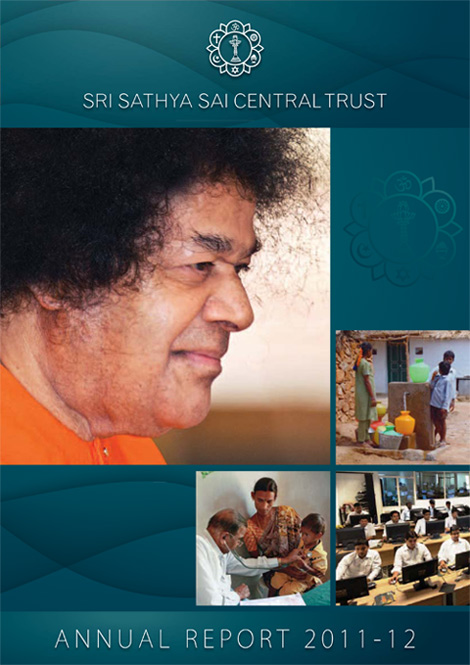 | |
| Front Cover of the Annual Report |
Prof. AR: If you recollect, after the Mahasamadhi, there was some extensive reporting in the press about several alleged happenings in Prasanthi Nilayam. There was a lot of negative reporting; there were questions; there were innuendos. That was the time it was felt maybe some of these need to be countered – we need to explain to them what exactly was happening. During that period, it was also decided that we should release an Annual Report that summarises all the activities of the Trust in order to tell people what exactly is happening to put everything in the proper perspective.
So, in 2011, we released the first Annual Report and in 2012, we have released the second one, which is an improvement over the first. Hopefully, in future years, this will continue to be released and every year, we will look at it differently and improve upon it as we go along. That's the basic genesis of why the Annual Report was issued from 2011 onwards.
Objective of the Annual Report
KSM: Did you have a model to work on? How did this whole idea start?
Prof. AR: Not really. In fact, it was basically started as a report which will just indicate our activities. We subsequently looked at several Trust reports issued; almost about 40-50 different Trust reports – from the Bill & Melinda Gates Foundation, from Dadabhai Naoroji Foundation; we looked at company balance sheets, etc., etc. From all these, we formed a broad idea of the method of presentation – what other people are talking about. But with respect to our own report, our objective was four-fold.
Firstly, we wanted to cover in a print format the extensive welfare activities of the Sai organisation, not necessarily about the Trust. We wanted to talk about the entire Sai movement and we wanted to divide all of them into several different sectors. Rather than talk about what organisation A or organisation B did, we wanted to divide them all into activities like Educare, Medicare, Sociocare. We also felt that we need to give them statistical information – how many students are studying in the colleges, how many surgeries are being done, etc. So, it's a combination of activities, records, statistics and also objectives.
We also, through all this, wanted to convey a message that all activities of Bhagawan continue exactly as before, there is total stability and we are well on the way to fulfilling Bhagawan's mission fully. These were the four objectives. So, we used, I must say, the Annual Report as a vehicle to convey all these in a meaningful manner.
KSM: So, this attempt at transparency and accurate information dissemination – who was it intended at?
Prof. AR: Predominantly, this was intended for opinion-makers, press, people in the government, bank and our donors, our contributors. But in the very first Annual Report, we felt we also have to communicate to our own fellow devotees – a lot of them were feeling confused as to what was happening. So, even though the predominant audience was the opinion-makers, the donors, bankers, the government people, etc., our large body of devotees also were part of this, even though they were not the main people intendees as far as this message was concerned. Overall, it communicated a necessary message to all the people concerned.
Media Response to the Trust's Annual Report
KSM: For the past two years, on Bhagawan's birthday, the Trust has been holding a media conference after it releases the report. So, how has the response from the media been to the Annual Report?
Prof. AR: Oh, the response of the media for the Annual Report this year has been outstanding. Last year, it was kind of lukewarm because we did it for the first year.
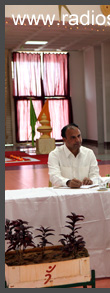 | 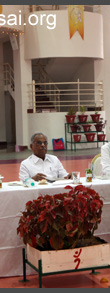 | 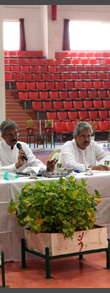 | 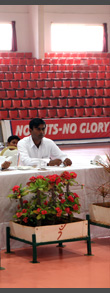 | 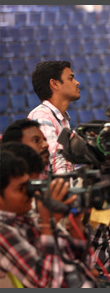 | 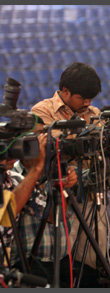 | 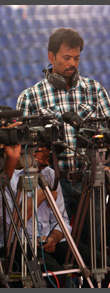 | 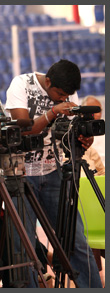 |
| Representatives of the Central Trust holding a press conference on 23 Nov 2012 and sharing with the Media the Annual Report 2011-12 | |||||||
KSM: I think some statistics that they were looking for were not in last year's Annual Report.
Prof. AR: Exactly. Last year, for example, we didn't give the full financials. It was just an attempt; we put something together.
KSM: It was a great start, though.
Prof. AR: Right. This year, the press conference was outstanding. The purpose of the press conference was to give them copies of the Annual Report and also take any questions about any matter connected with the Trust that they wanted to raise. In fact, the reaction was extremely enthusiastic because there were banner headlines and one of the vernacular newspapers said, "Sathya Sai Trust clearly establishes transparency." This was the banner headline in one of the papers.
KSM: It's a real pat on the back of Central Trust.
Prof. AR: Absolutely! Another paper said, "No other charitable organisation in India has presented such complete, exhaustive reports."
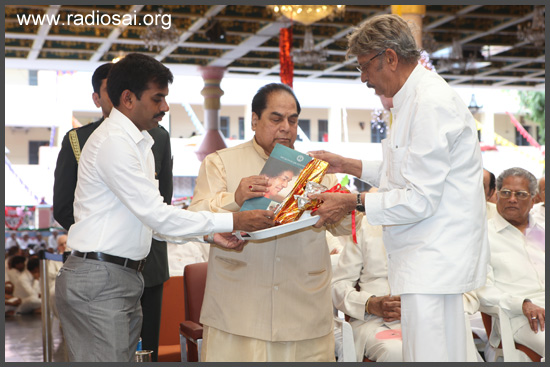 | |
| Hon'ble Governor of Tripura Dr. D.Y. Patil (center) releasing the Annual Report on Bhagawan's 87th Birthday morning. Also seen (right) is Prof. Anantharaman |
It basically talks about a record of all our activities here. We have released the full financial information here – how much was received, how much was spent, and the same papers that were reporting earlier that there were secret tunnels here and all that were the same papers who came back and said something which was absolutely frank – "We've not seen this kind of a report from any other charitable organisation" and it was very very laudatory.
KSM: That is very pleasing to hear!
The Enriching Experience of Preparing the Report
KSM: Is it going to be an annual affair now, although you're not mandated by the law to do so?
Prof. AR: We're not mandated by the law to do that, but as we prepare this, we ourselves are struck by what is happening here. Each year as my colleagues and I prepare this annual report, we are wonderstruck at both the extent and the depth of this whole organisation.
KSM: Very true!
Prof. AR: We have all kinds of people here. We have cardiologists working as photographers, chief engineers doing electrical work, research scientists working as carpenters – all kinds of people, groups of people that are working here. As we write it, we ourselves are completely taken aback at the vastness of this movement. So, in addition to conveying a message to outsiders, this also seems to be an opportunity for all of us to record and turn inwards, look at what is happening and make corrections.
For example, arising out of this now, I understand every state organisation has been asked to produce a report by the All-India President; the International organisation is going to produce its own report. So, it's also consolidating our own thinking and recording. The moment you have to put something in writing, there's a greater efficiency happening and we see it driving an efficiency right through the organisation. I think that is one of the biggest advantages of this Annual Report.
A Run-through of the Report
KSM: So, that's very forward thinking on part of the Central Trust and the Sai Organisation to think in these terms. Now, what are the main topics? I understand from browsing through the Annual Report that you have covered the activities of the Central Trust, the Sri Sathya Sai Seva Organisation of India, the various Trusts that function in the Ashram such as the Media Foundation as well as the International Sai Organisation. So, what all lies between the covers of this report?
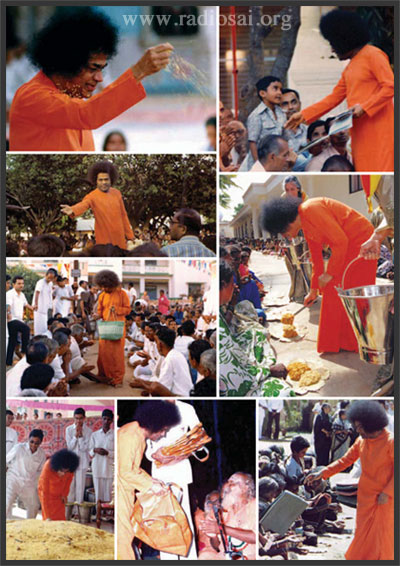 | |
| Swami is Love in Action |
Prof. AR: Well, the best way for me to do that would be to go over the report. We start with some introduction. For instance, we start right on the first page with a letter Swami wrote in May 1947 when He was 20 years old, where He basically for the first time declared, "No one can comprehend My Glory, whoever he is, whatever method of inquiry and however long his attempt." We have reproduced that letter.
KSM: And it rings so true!
Prof. AR: Absolutely! If one goes through the complete report, it's almost as if what Swami talks in these lines are reflected in the rest of the pages – as if it's a confirmation of that.
KSM: It's a 120-page report and after going through it, you realise nobody can comprehend the enormity or the profundity of this mission.
Prof. AR: Nor the vastness nor the diversity. They are also additional things.
We start with the report of the trustees, which is a very conventional report, and then we talk about how our Trust is organised. Ours is a very complex organisation. We have half a dozen different Trusts; not all of them have an official, legal, administrative reporting relationship to each other, but all of them have a common objective of Swami's mission.
We tried putting together a graph, an organisational chart, indicating how all these organisations go together, etc.; so, that was an attempt. In the page after that, we have a financial statement. For the first time, we are giving a financial statement of income, expenditure, and where the sources of funds came from.
Where the funds were applied – how much on education, how much on medical relief, how much on welfare activities, how much on medical, and in order to make it easily understandable to people, we have often given a pie diagram, block diagram.
KSM: Such colourful infographics and so easy to understand and grasp!
Prof. AR: Exactly!
The Details of Contributions, Income and Expenditure
KSM: Before you go any further, this is one topic that was really hot or making headline news in the canard that we experienced after Bhagawan's Mahasamadhi. There were all kinds of unimaginable amounts of monies that were being mentioned about the assets of the Trust. So, based on the Annual Report, would you like to tell Radio Sai listeners what sort of an income we had last year in crores?
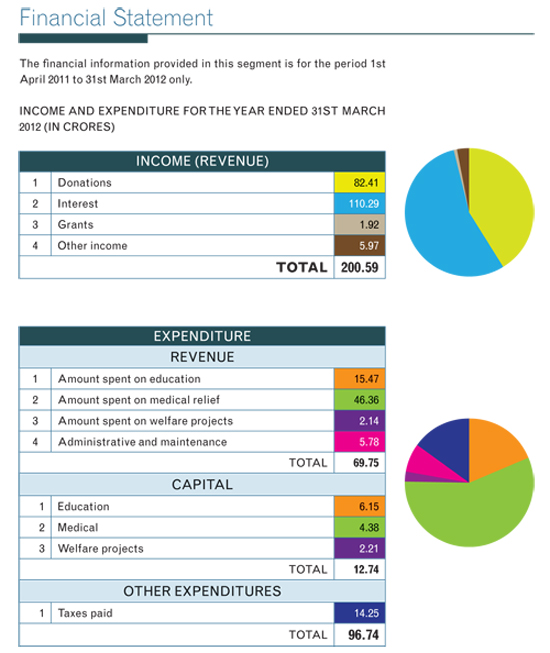 |
Prof. AR: Last year, if you see the income and expenditure statement, we had two sources of income. One was from donations from people. Another was interest from capital funds, which we already have, and a small amount of grants. Putting them all together, there was a total receipt of about Rs. 200 crores, out of which Rs. 82 crores came out of donation, Rs. 110 crores came from interest in capital fund that is already kept with us.
KSM: Swami was so futuristic. He invested enough money to ensure the longevity and continuity of His dynamic institutions.
Prof. AR: Absolutely!
KSM: Just the interest is Rs. 110 crores.
Prof. AR: Interest alone is Rs. 110 crores; it is absolutely adequate to keep all our activities at the current level without any problem whatsoever for at least another 5 years.
KSM: Wow! That is so heart-warming to know.
Prof. AR: Yes. The only thing is for future projects and to provide for inflation, etc., we need to continue to get donations. After all, we need to undertake greater activities, more activities, etc. So, donations need to continue to come in and all these donations invariably would be put either as capital fund or as projects.
KSM: And even last year, we had over Rs. 82 crores.
Prof. AR: Over Rs. 82 crores was the amount that was received as donations. So, the story that donations have dropped, funds have dropped, there is financial crisis is completely incorrect information.
KSM: It is not based on truth at all?
Prof. AR: Absolutely not! People continue to be very conscious of the fact that donations need to be made for all these welfare activities. There's been no reduction in these of any whatsoever. In fact, all activities, all expenditure of the Trust, all future projects, etc., are going without any diminution whatsoever.
KSM: It's very interesting – people who contribute their resources, time and energy and love to Bhagawan's mission are never influenced by what the media says – that has been a very common thread throughout the Sai Avatar's career – but those who have nothing to contribute except maybe some sound bites are the ones who read this stuff and get so influenced.
I remember one particular media report very distinctly on a major national channel where a person was reporting about some secret tunnel under the Yajur Mandir and he said he was reporting from Puttaparthi. He was standing and doing his piece to camera in front of the Sri Sathya Sai Super Specialty Hospital, Whitefield; I very well recognised the building. On that was imposed the word 'Puttaparthi'. So, they featured the Whitefield Hospital as Puttaparthi Yajur Mandir and said, "This is the palatial house in which Sai Baba used to live". Considering that was the level of accuracy of a major TV channel in India, we can very well see how important the facts in this Annual Report are, to set the record right. (After the Storm - Musings by Prof. Venkataraman about the media fiasco)
Prof. AR: Absolutely!
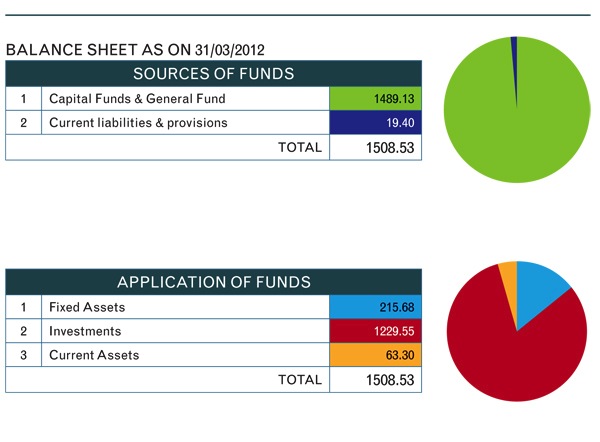 |
KSM: How did we do in terms of sources of funds? Here, you've spoken of capital funds and current liabilities. Would you like to explain what that's all about?
Prof. AR: Sources of funds are the funds that we have received over the years, which are kept as a general fund; interest out of that is an income and we spend that interest towards these welfare activities.
KSM: And we have a lot of fixed assets, investments, current assets – those are application of funds? These are huge amounts of money.
Prof. AR: Not really. If you look at the fixed assets, you will find in the application of funds, out of the Rs. 1,508 crores of sources of funds, Rs. 1,229 crores are invested in deposits, etc., out of which you get an interest of Rs. 110 crores.
KSM: I see! Out of curiosity, what sort of investment strategy does the Trust use?
Prof. AR: We don't really go for investment into stocks. Swami was very very careful while He was here. All our investment is invariably in bank fixed deposits.
KSM: Nationalised banks only?
Prof. AR: Nationalised bank fixed deposits. And Swami was very particular that we should take no risk with these capital funds. We must ensure that we get the maximum amount of return in gilt-edged securities. As far as these are concerned, we are still following exactly the same kind of a thing.
KSM: Wonderful to know that! I'm sure listeners will appreciate it very much.
Prof. AR: One more significant thing to note is, as we have also mentioned in the report, out of a total expenditure of Rs. 82.49 crores, Rs. 76.71 crores, that is, almost 93 percent, has been spent in service and welfare activities.
KSM: Wow! That is one impressive ratio for an NGO!
Prof. AR: Only 7 percent has gone towards miscellaneous, administration, etc. It's a very clear indication; it's okay to spend the money but it's very gratifying to know that over 93 percent of this money has been spent on real welfare activities.
KSM: Very true!
Prof. AR: So, there have been no secret tunnels or siphoning happening anywhere.
KSM: (Laughing) I'm sure Radio Sai listeners were never concerned about the secret tunnels, but it's good for the media to know the truth as it stands.
Prof. AR: On subsequent pages, we give a complete report about compliance and social impact. There were some comments last year about, 'Where is this money coming from?', 'How much foreign donations?', etc. We make a complete statement about the Ministry of Home Affairs; we need to give a return on Foreign Contribution Regulation Act; we need to give returns under the Income Tax Act. All these returns have been submitted on time and we are giving a statement of what returns were submitted to them at what time; it's a complete statement.
Trustees Handpicked by the Divine
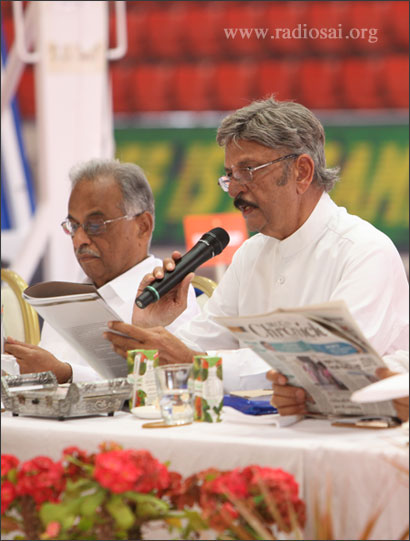 | |
| Prof. Anantharaman speaking to press reporters during the press conference held on Nov 23, 2012 |
KSM: Considering the calibre of the Trustees of the Sri Sathya Sai Central Trust, this is not surprising at all because everything we have done has met the highest possible standards of accountability and transparency. As far as compliance and social impact go, I think this is one model Trust in India, with the Annual Report becoming an annual feature, that people will look up to for transparency and accountability.
Prof. AR: Absolutely! Even then, we re-examined our internal audit systems, we re-examined statutory reports, went through the whole thing with a fine tooth-comb and ensured that internally, we have created enough safeguard and protection to ensure that there is a complete rigorous control system being followed. This is because the Trustees are constantly conscious of the fact that they are all just Trustees of a wealth that is handed over to them and they need to maintain it and spend it and spend whatever proceeds they have out of it for public good; they are extremely conscious of that.
KSM: All of them work in honorary capacities.
Prof. AR: They travel at their own expenditure and give their time freely and willingly.
KSM: And professionally, they are all highly qualified for this sort of work. Would you actually like to tell our listeners who exactly the Trustees are? When I was watching the news media, it was very interesting; they were naming people who are not even on the Trust.
Prof. AR: Justice Bhagawati, a former Chief Justice of India, and then Sri Indulal Shah. Sri Indulal Shah, as you are aware, has been a doyen of the Sai movement in India, responsible for creating the All-India Organisation and International Organisation, a long-time associate of Swami.
KSM: A chartered accountant by profession.
Prof. AR: Leading chartered accountant by profession. Sri Giri, who was also the Vice-Chancellor (Bhagawan's University); before that, he was the Chief Vigilance Commissioner of the Govt. of India; he was the Secretary to Govt. of India, Department of Education; Sri V Srinivasan, who was formerly the National President of the Confederation of Indian Industry (CII), currently the President of the All-India Seva Organisation; Sri Chakravarthi who was the Collector, District Magistrate and Former Finance Secretary (Projects), Government of Andhra Pradesh; he was also the former Commissioner of Commercial Taxes, Govt. of Andhra Pradesh; Sri Bhagavat, who was the former Chairman of Indian Overseas Bank; Sri Shetty who was the former Chairman and M. D. of Canara Bank; Sri Naganand, Supreme Court advocate and a chartered accountant; he is also the President of the Karnataka Section of the International Commission of Jurists; and Sri Ratnakar, who is an MBA from the Sathya Sai Institute of Higher Learning and also an eminent and active social worker and a leading citizen of Prasanthi Nilayam.
 |  |  |  |  |  |  |  |
KSM: That's a very impressive list indeed! I'm sure our listeners needed to hear that because some of the media reports were hilariously inaccurate. Considering that Mr. V Srinivasan is an entrepreneur himself and he's the All-India President of the Sri Sathya Sai Seva Organisation, they kept mixing his name with a number of other persons with the same last name. They didn't even do their homework to find out which Mr. Srinivasan was on the Central Trust.
Prof. AR: Yes.
Prasanthi as Vibrant as Ever
Prof. AR: After social impact, we introduced a new column called 'Festivities at Prasanthi Nilayam'.
KSM: Yeah, ours is a very very diverse; multi-faith, multi-cultural calendar of celebration.
Prof. AR: The Buddhists, the Moslems, the Jews, people from all over the world – how they come and perform, we've just given a snapshot of a few of these functions that took place in Prasanthi Nilayam. One of the significant features was ever since the Mahasamadhi, not one function has been let go. We are having every single function conducted exactly the same way as before. So, we thought we'll give a pictorial representation and a description of all these functions.
 |  |  |  |  |  |  |  |
KSM: And what people find very touching is the decorum and the dignity with which every celebration begins with the members of the group walking up to the Mahasamadhi to offer the card as we did when Bhagawan was in the form and that moment is so poignant that people feel the presence is still there. Nothing has really changed. Prasanthi Nilayam is even more vibrant.
Prof. AR: Absolutely! I think it is the University which must take the credit for establishing this. If you recollect, past two years during the convocation, they even had the recorded voice of the Founder Chancellor declare the convocation open.
KSM: So, when Bhagawan's voice came on the PA system, everybody felt His presence right away.
Prof. AR: Absolutely! People went, received their medals, kept it to the chair; it was almost as if Bhagawan was sitting there, except that His form was not there; everything went on as usual. That tradition which the University started, is being followed by everybody now.
KSM: Very rightly said! It's a very good positive tradition; it's very heart-warming.
Prof. AR: There are several organisations responsible for the Sai movement. So, we didn't want this to become just a report of the Central Trust with just numbers of money received, money paid, etc. We wanted to use the opportunity also to talk about all the activities of the Central Trust. So, we divided them into three areas – Medicare, Educare and Sociocare. In Medicare, we wanted to talk about the hospitals, in Educare we wanted to talk about all the educational institutions and in Sociocare, we want to talk about all the organisations. So, we wrote a brief preamble.
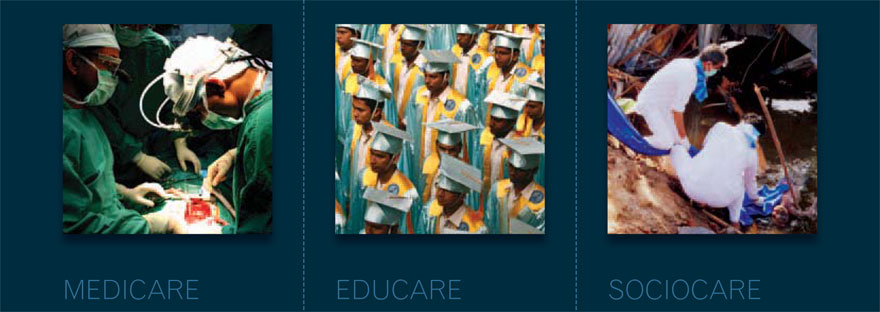 |
I think I can read what we have written here. We say here, 'While the initiatives of the Sathya Sai Seva Organisations are categorised under Educare, Medicare, and Sociocare, they are in fact integrated. The movement has witnessed an emergence of an institutional framework that connects, consolidates and integrates many of these activities. This connection is a powerful force for it brings high efficiency, drive for excellence and professional expertise.
Being technology-driven, it is transmitted fast across different geographies, resulting in quantum leap in scale, outreach, and quality of service. More than anything, they are all cemented together by Baba's concept of universal and selfless love. This is exactly what we want to project in this –the whole thing is cemented together by Swami's concept of Love All, Serve All'.
KSM: Very beautiful! And the Annual Report has beautiful pictures – very nice colour printing, because a good picture speaks a thousand words.
Prof. AR: We had this amazing picture of the Whitefield Hospital. A friend in Bangalore one day telephoned me and said, "Today, there is thunder and lightning. I'm going to go and take a picture of the Whitefield Hospital." I said, "Go ahead." He immediately sent this picture to me; it's a beauty.
 |
 |  |  |  |  |  |  |  |
| Sri Sathya Sai Institute of Higher Medical Sciences, Whitefield, Bengaluru | |||||||
KSM: It's like the heavens are opening up and light is just pouring into this beautiful temple of healing.
Prof. AR: Exactly! You can visualise and imagine whatever you want out of this.
Taking Forward the Master's Medical Mission
KSM: It's very heavenly! Now, there are beautiful statistics here. Let's talk about the kind of work we do under the Medical Trust. Not only are our hospitals continuing the good work that Bhagawan has initiated but they seem to be upgrading and improving with each passing day.
Prof. AR: We have two super-specialty hospitals and two general hospitals.
KSM: And a Mobile Hospital.
Prof. AR: Yeah. In both the super-specialty hospitals, we are adding new equipment. For instance, in the Whitefield Hospital, we are adding electrophysiology with 3D mapping, which is a new technology, and 3D echo-cardiography. There is also a fractional flow reserve which is a technique used for coronary catheterization. These are all the additional equipment that has been added. We are also adding a lot of equipment in our Prasanthigram Hospital also; there was one that was added recently. We wanted to give a record of all these. Another interesting thing that has happened is the reach of our Mobile Hospital, a 'Moving' Marvel.
 |  |  |  |  |  |  |  |
 |  |  |  |  |  |  |  |
 |  |  |  |  |  |  |  |
KSM: It's tremendous, isn't it?
Prof. AR: Yeah. Our Mobile Hospital alone has dealt with a total of 83,000 patients to be exact in the last one year. And a new introduction in the last couple of years has been the Tele-health services, which is a collaborative effort between the Sathya Sai Central Trust and Indian Space Research Organisation (ISRO) – it uses the power of Information Technology to extend the reach of our medical care and medical education and training. The whole idea is that we have an outstanding facility here, which is a model for everybody else to follow. (An International Healthcare Information Technology End Users' Conference was held in SSSIHMS, Whitefield in Nov 2012)
 |  |  |  |  |  |  |  |
Other people are in fact following this model. One more hospital has come up in Raipur on the same model as our Super-specialty Hospital here – created by another Trust, started by a devotee of Sai Baba. I'm sure there will be many more such efforts that are coming in. People are building schools to re-establish whatever we are doing through our own school system. Similarly, even our existing services – we want them to be made available to all, which is Sathya Sai Tele-health services.
KSM: Hmm! So that patients need not travel a long distance.
Prof. AR: Exactly. Through the Tele-health services, patients as far as Orissa can be given cardiac advice and service from somebody sitting in Whitefield and in Prasanthigram.
 |  |  |  |  |  |  |  |
KSM: It's a beautiful blueprint for resolving the healthcare issues of whole of India or for that matter the developing world.
Prof. AR: And imagine all this health delivery is given free of cost.
KSM: That's just totally mind-boggling! There must be crores and crores of rupees that the Central Trust spends to ensure this.
Prof. AR: That's the figure we have given in the first page here.
The Lamp of Learning Continues to Shine Lustrously
Then, we talk about Educare. Previously, whenever we talked about Educare, we only talked about our University here which has integral education as its motive.
 |
KSM: Across its four campuses.
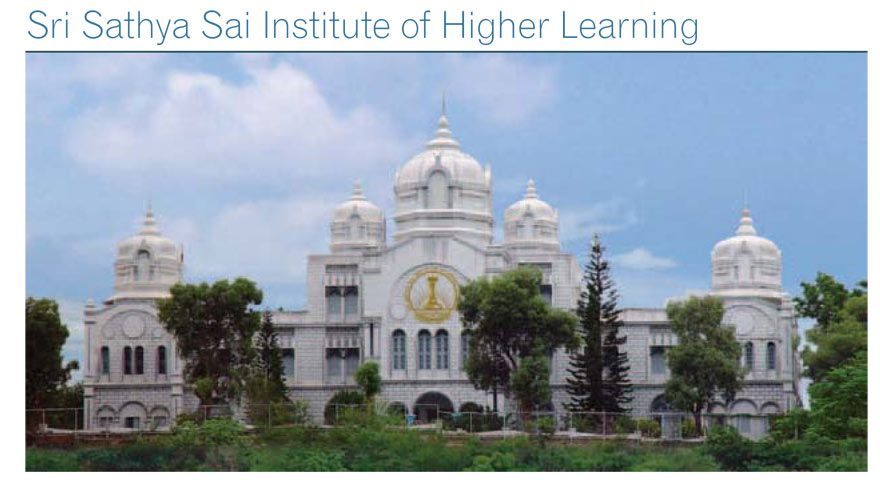 |
 |  |  |  |  |  |  |  |
| An info-graphic describing student-teacher ratio, research funding and student performance of SSSIHL | |||||||
Prof. AR: Across its four campuses. The fourth campus is operational since last year.
KSM: At Muddenahalli.
 |
Prof. AR: But there is more in the sense that we have a Secondary School (Sri Sathya Sai Higher Secondary School) which provides a lot of inputs of people into these universities. There is the Sathya Sai Vidya Vahini project which makes our value education available to school boards across the country. They have already gone and presented this to several school boards – 14 school boards of standard 6; almost 45 school boards have been given the first set of lessons. We've given a report about the Vidya Vahini team. And then, there are Sai schools in India.
 |  |  |  |  |  |  |  |
KSM: I believe, 99 of them.
Prof. AR: Which we operate through several different Trusts. Last year, we integrated all of them into a single educational standard. These 99 schools are now being managed by our All-India Sai Organisation and they exist in every state. From Andhra Pradesh to Paschimbanga.
KSM: To Uttarakhand, Sikkim, Rajasthan, Odisha. So many places. Himachal Pradesh, Haryana, Gujarat, Karnataka, Kerala.
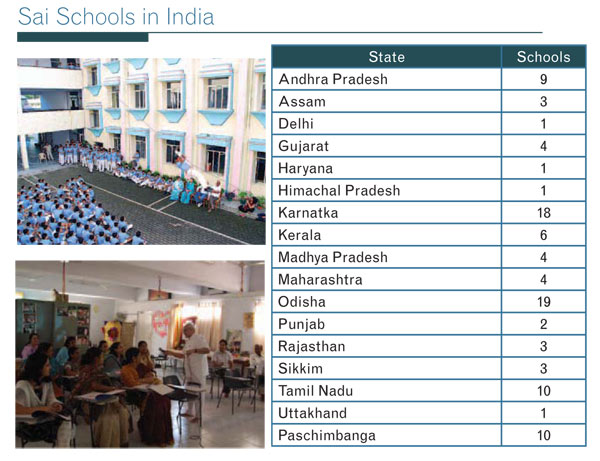 |
Prof. AR: Exactly. So when we talk about Sai Education, it is not just the University alone, not the Primary School alone, but it exists all over. And more schools are springing up. These are the officially recorded ones; there are also other schools which are following the pattern and doing this.
KSM: I guess the time has come when people are recognising the value of character-based education – the model that Swami gave decades ago but never made a big deal about. Suddenly, He was busy sowing the seeds quietly and now, there is a harvest that's happening.
Prof. AR: He quietly introduced and then went on to the next thing. It's just blowing up. It's growing into a tree and becoming a forest today.
KSM: Yes. And it's yielding beautiful flowers and fruits.
Prof. AR: Last year, we introduced a whole column about the Annual Sports and Cultural Meet; we spent 10 pages talking about it mainly because it is a fiesta where all the bright young minds from all our campuses join together. In the past, they did all this in order to give joy to Swami. Last year in the absence of the physical form of Swami, we found their desire to give joy was probably even greater. They had newer events which completely talked about their dedication and teamwork and whatever they are capable of. It is a big building block as far as our youth in Sai movement is concerned.
KSM: Yeah! Creativity, leadership, skills or concentration ... everything.
Prof. AR: Absolutely! You find all kinds of creative ideas here. So, it's not just an Annual Sports and Cultural Meet; it's almost like a fiesta of creativity and innovation.
KSM: Indeed it is!
 |  |  |  |  |  |  |  |
Prof. AR: That's why we gave a complete written page.
KSM: And there's a section on the Grama Seva project which is very popular amongst the students.
Prof. AR: Swami introduced this Grama Seva project several years ago in order to achieve 3 objectives. Number 1: He wanted to expose students and sensitise them to rural living. Secondly, He wanted to send a message to the people in rural area that there is a God who cares for them. Thirdly, He wanted to teach the students the basic principles of project management. He achieved all these 3, the strategist that He is; He achieved all these 3 objectives with a single project which is Grama Seva.
Grama Seva continued last year at exactly the same kind of an intensity and level as the Grama Sevas earlier. And we have given statistics of how many people were served, how many villages were served in this report: 153 villages spread across the 3 mandals of Puttaparthi. Again, when Swami did this, His intention was not to solve the problems of rural India. His intention basically was to establish a pattern and a model which students all over the country and all over the world can follow. While taking advantage of this to develop and provide integral education, value education to our own students, this also is a model for every University and every educational institution to follow.
 |  |  |  |  |  |  |  |
KSM: And this, apart from being a case study, is such a learning ground for those who graduate from this University because our alumni are continuing this tradition wherever they are going.
Prof. AR: Absolutely! Not only our alumni, but also people in our All-India Seva Organisation. There are also hundreds of these unreported Grama Seva projects happening all along; some of them are being reported. But very soon, I get a feeling, we will probably not be able to report anything, because it will be so vast.
KSM: So vast, yes. All these years, we didn't talk about it. All of a sudden, now that we are collating this information, we are feeling so overwhelmed.
Prof. AR: Exactly! It was an absolutely fascinating experience. When we were trying to present this kind of a report, the whole vistas got revealed to us. None of us were aware of them. Or maybe we were aware, but we were not conscious of it all the time. But when we put them all together and see it all in one place, the first thought that comes in our mind is 'Wow!'
KSM: Yes, indeed! So vast! It's all a one-person miracle. And Swami said if we believe that we are also God, each of us can bring about a similar miracle. Imagine!
Prof. AR: One person who was 5 foot 4 inches tall and weighed 115 pounds.
KSM: And who had no formal education and no seed capital to begin with.
Prof. AR: Dropped out of school. Yeah, exactly. It's amazing. It's so true it's completely unbelievable.
KSM: Yeah, because they say 'The simplicity of truth renders it incredulous at times.'
Prof. AR: Then we talk about Sociocare where we have tried to give an organisational structure.
 |
KSM: This is the Sri Sathya Sai Seva Organisation which is the foundation of the miracle called the Seva Dal.
Seva Dal - an Exemplary Force Armed with Selflessness and Love
Prof. AR: Our Seva Dal is a remarkable group of people who do their job with a quiet efficiency and continue to do it exactly the same way. There are lot of concerns and doubts – "Would Seva Dals continue to come now that Swami's physical proximity is not there?" I remember several years ago, one of the rewards of Seva Dal was they could do Padanamaskar to Swami.
KSM: Yes, on the last day.
Prof. AR: Slowly, He withdrew that Padanamaskar; at least the Seva Dals were having darshan of Swami. Now they can't even have a darshan. So, the question arose – "Why should a 60-year-old Seva Dal man sit all night guarding a frontier somewhere when he's getting absolutely no reward, not even a darshan?" But they continue to do the job with the same amount of love and same amount of dedication; it's amazing.
KSM: This army of virtuous men and women and sometimes children who come to assist – young adults, just to watch them is such a moving experience – the dedication with which they serve this ashram. All our hospitals run on this fuel of love that Swami has created.
Prof. AR: Just imagine! There are about 1200 of these men and women of Seva Dal who are in service throughout the day; it will be 1200 men for the next 3 weeks and then some other 1200 men will come the 3 weeks afterwards, all over. You know, like a franchise of a McDonalds, they have the service concept given to them in a tablet form which they do not follow mechanically, but with love.
KSM: Taking their personal time off, professional time off, dedicating it to serving the Sai mission, incurring a lot of expense to reach here.
 |  |  |  |  |  |  |  |
| Sathya Sai Seva Dal are the very supporting framework of the Sai Organisation | |||||||
Prof. AR: They travel at their own expenditure; we provide them probably a couple of meals here, provide them simple accommodation, but they take time off from their work and these are all people of different types – bright young minds, students, professionals, engineers, VPs, doctors.
KSM: And I think the fact that many of our Seva Dals are so highly qualified coming from diverse backgrounds, that's what makes this workforce so creative and efficient because they bring those efficiency into the work; they don't render Seva just for the sake of it; they do it as efficiently, as lovingly, as smartly as they possibly can.
Prof. AR: Correct. We talk about the International Organisation also, after the National Organisation. In fact, we also give a set of statistics where we talk about our activities in 23 states of the country, 2700 villages adopted.
KSM: In India?
Prof. AR: In India. There are 140,000 trained Seva Dal people. Seva Dal people of committed loyalty; they are not just raw people – trained Seva Dal people.
KSM: This is 1.5 lakh people.
Prof. AR: Exactly! And there are about 592,000 active members of the Organisation who attend samithis, who attend meetings and activities. And there are over 10 million Bal Vikas graduates.
 |  |  |  |  |  |  |  |
KSM: Wow! That is an enormous number!
Prof. AR: Absolutely! And these Bal Vikas graduates are committed soldiers in the Sai mission.
KSM: Definitely! They are our future leaders. They are emerging as young leaders.
An Avalanche of Goodness Started by the Avatar
Prof. AR: Somebody talked about multiplier effect, you know. Swami has created this whole… somewhere along the line, if you sit and think, how did He conceive of this whole thing? One day, He quietly went and started a University; another day, He went and quietly started a hospital somewhere; and the third day, He picks up a Seva Dal somewhere; in His mind, He has connected all this.
He knew that all this was a model which was going to work. It's something remarkable. I teach Management in the Business School. If I consciously want to sit and analyse and prepare a model of all this, I wouldn't be able to do that. It's only some divine power.
KSM: Cosmic mind! Cosmic intelligence!
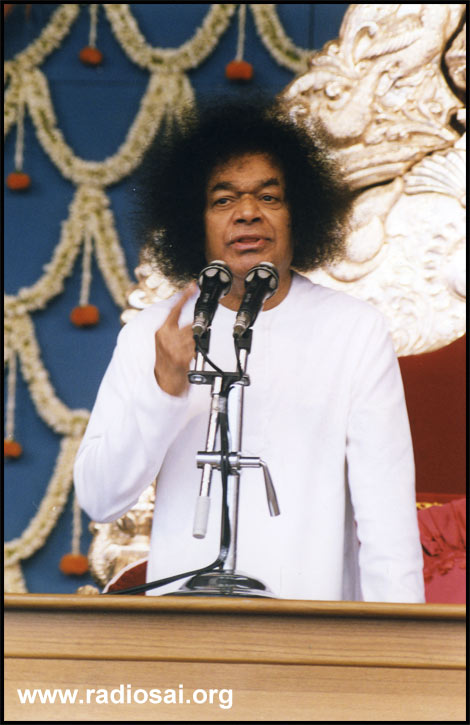 |
Prof. AR: Absolutely! Only that which is capable of doing all this! Otherwise, it's absolutely impossible.
KSM: And Swami had no consultants, strategists advising Him; He just quietly did it all, one step at a time.
Prof. AR: And He didn't even put it on a piece of paper. There is no record anywhere; it just happened.
KSM: It was just a natural thing to do for Him, like breathing.
Prof. AR: Exactly! One fine morning, I remember, He sat here and announced, "One year from now, there'll be a campus at Muddenahalli." It happened. And I remember several years ago, He announced, "One year from now, there'll be a University; all these colleges will join the University." So, it's almost as if He had in His mind all these pieces; just made a dramatic announcement of one piece, chose a man – "You take care of that piece". And then He chose another man – "Take care of that piece." And He joined all the dots.
KSM: Like the new-age stuff about the power of intention – whatever Swami willed or uttered, it just happened.
Prof. AR: Correct!
KSM: I guess that just came from the purity of His intention. Selflessness. Absolute selflessness and unconditional love.
International Organisation Continues to Carry His Message
Prof. AR: Then we talk about the International Sai Organisation where we operate in about 113 countries.
KSM: We continue to do the same work – the medical camps.
Prof. AR: All of them!
KSM: The soup kitchens.
Prof. AR: Yeah, there are 113 countries; there are about 2038 Sai centres; there is disaster relief everywhere and you have this lovely map. When I looked at this map, it's almost like a General placing His army in several different battlefields.
KSM: But this is the General of Love, His army of loving soldiers, peacekeepers.
Prof. AR: I can't conceive of any organisation having such extensive locations.
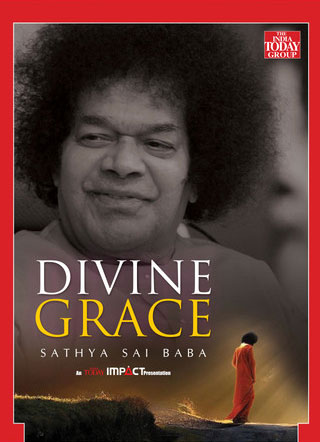 | |
| Special Issue on Bhagawan released by the India Today Group |
KSM: China, if I may add now.
Prof. AR: From Ireland and I believe China now. It's amazing – all over the place. The other day, a group of people from 21 Russian countries came and said, "We want to translate 'Divine Grace' into Russian. Can you get us permission?" So, I wrote to India Today and within 2 hours, permission came "Go ahead." Amazing! It would never happen in a magazine like India Today, but it happened.
KSM: Oh! The India Today special feature on Bhagawan – 'Divine Grace'.
Prof. AR: Yeah. It's going to be translated into Russian.
KSM: That's fantastic news!
Prof. AR: Then, we also talk about the Sathya Sai Nithya Annadana Pathakam. It was launched in 2010, covering villages around and this is the area where there are amazing stories. Whenever these people go to a village, there's a demonstration of Swami's love – Vibhuthi, Kumkum.
Prof. AR: Any village that they go to. It's almost as if Swami's waiting to accompany them there; there is a report of that. Then, there is a report about Easwaramma Welfare Trust – their Mother & Child program, etc. Of course, we conclude with the most important – the amount of work which Radio Sai is doing ... the amazing work that you are communicating this all over the world. This communication is very, very important; I must say you're doing a great service.
KSM: Thank you sir on behalf of the entire team!
Prof. AR: We conclude with the organisation's human resources; this is something which is amazing. You find we operate in about 113 countries. In India alone, there are nearly about 600,000 members all over the country, active members who attend samithis and do work, etc. Out of these people, about 4,659 members are engaged in full-time service.
KSM: Incredibly impressive!
Prof. AR: In Medicare, Educare, Sociocare. This also includes the 1,594 Seva Dal people who work day in and day out. And we've given a graph about hospital staffing – how many doctors, how many nurses, how many paramedics; Educare staffing – how many academics, administrative, contingent staff; Sociocare – how many people work, etc., etc. When you look at all this, what is amazing here is the human capital of the Sathya Sai Organisation.
It continues to demonstrate its vibrancy. You have doctors, you have teachers, managers, technologists, volunteers, casual workers, professionals and each person brings their diverse experience to serve, create and sustain the organisation. And it happened not by a formal organisation where there is a boss on top, where there are people, job specifications for which you pay a salary – no! All these people have come together voluntarily, to create this organisation all by themselves.
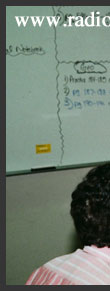 |  | 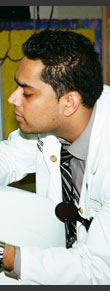 |  |  |  | 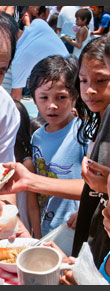 |  |
| (Left) USA - Eye Examination Medical Camp, (Right) Philippines - Devotees Lovingly Serving Food to Needy Children | |||||||
KSM: It's like an organic growth that has the love cell as the nucleus.
Prof. AR: Exactly. I teach management at the University. If I think of how I would create an organisation like this, my mind goes to how the Chief Executive will sit and draw the mission, the vision, the organisation, the structure, but nothing like that has happened here.
 |  |  |  |  |  |  |  |
| (Left) Netherlands - Sathya Sai Volunteers Serving the Elderly, (Right) USA Hurricane Sandy - Sai Volunteers providing necessary items at the shelter | |||||||
KSM: It turns all those theories on its head!
Prof. AR: Absolutely! It all just came together.
KSM: The network of pure love, selfless love of the Incarnation.
Prof. AR:That's why we conclude with this – both in geographic reach and competence, no other charitable organisation has such a committed and diverse human and intellectual capital. This is where our organisation is completely different from all other charitable trusts. Every other charitable trust has plenty of money but not people resources. Before writing this sentence, I did in-depth investigation of every major charitable trust in the world and I found not one of them has the kind of reach and competence of people that we have in our organisation, which is very rare.
KSM: Yes! You're absolutely right. And the fact remains that out of this human capital, most are volunteers.
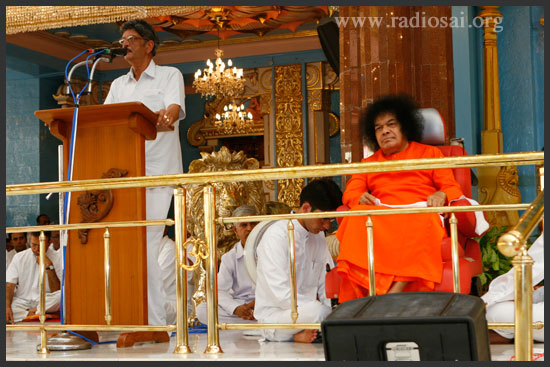 | |
| Prof. Anantharaman speaking in the Divine Presence |
Prof. AR: Exactly. Most people are volunteers; most people have come in without any clear idea of what they are expected to do; when they came in, nobody told them 'This is your job'; nobody told them 'This is your boss'; nobody told them 'This is your remuneration'.
KSM: They just rose to the occasion.
Prof. AR: They just clicked together and things worked.
KSM: They did what needed to be done because they're coming from a different motivation level.
Prof. AR: You can understand all this happening, when there is a physical charismatic leadership on top. I myself could understand this when He was physically there but the fact that the same magic continues to work even in the absence of the physical charismatic figure speaks volumes of this. This completely removes the question, 'After Sai, who?' There is no 'After Sai' in the first place; He's there all the time. He has established it; He has sown this; it will just grow. It is something remarkable.
KSM: Now, Prof. Anantharaman, you've given us an amazing bird's eye view of the Annual Report. I just want our listeners to also know that they can themselves review this online because Prof. Anantharaman has only published 1500 copies of the Annual Report and they've gone fast like hot cakes. Our listeners can download or view it online; there's a pdf available on the Web site of the Sri Sathya Sai Central Trust and the Web site is srisathyasai.org.in. (PDF version of the Annual Report)
One last question. What do you expect to be the take-away for a person who's browsing through this report?
Prof. AR: I can answer it only the same way as I felt each year as I sit and spend my time in preparing this. As I prepare it each year, I am wonderstruck at the extent and depth and the vibrancy of this organisation. As I said before, cardiologists doubling as photographers, nuclear physicists running radio stations, IT specialists running a truck; it's a huge, huge collection of complete – the elite, the common man, the prince and the plebeian; all of them putting together, all offering service with love, with the single objective that Bhagawan's mission will go on. It is that persistent, constant impression that I have every year as I prepare this report.
 |  |  |  |  |  |  |  |
As I prepare it each year, new vistas arise. It's almost like an ocean; we are just touching probably pieces of this ocean; there is something much bigger, much vaster, something which is unimaginable for all of us. It is that feeling of humility that we are probably sitting at the cusp of something vast, something big. I hope a little bit of it touches all the people who have seen this report. I want them to imagine this. It's just a piece, just an edge of what we are.
KSM: So powerful and yet so humbling. Thank you Sir. Sairam!
Prof. AR: Thank you.
TEXTO TOMADO DE: http://media.radiosai.org/journals/vol_11/01MAR13/SSSCT-Annual-Report-with-Prof-Anantharaman-13th-Dec-2012_part4.htm

























No hay comentarios :
Publicar un comentario